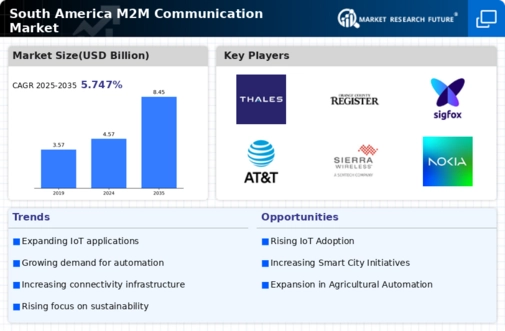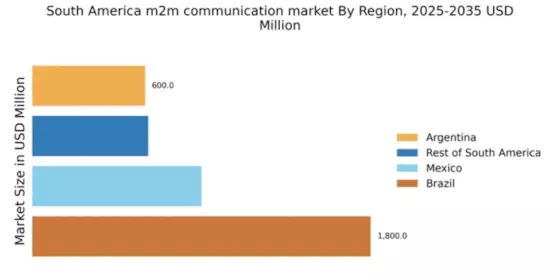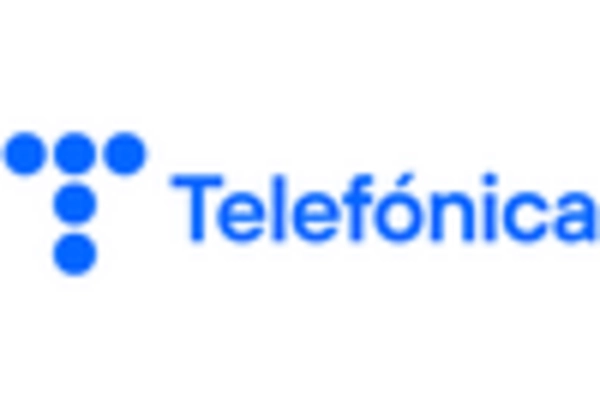Expansion of IoT Ecosystem
The m2m communication market in South America is poised for growth due to the expansion of the Internet of Things (IoT) ecosystem. With an estimated 30 billion connected devices expected by 2025, the demand for seamless communication between these devices is paramount. M2M communication serves as the backbone of IoT, enabling devices to communicate and share data effectively. This trend is particularly evident in sectors such as agriculture, where smart farming solutions are gaining traction. The m2m communication market is likely to benefit from the increasing integration of IoT solutions across various sectors, leading to enhanced operational efficiencies and new business models.
Rising Demand for Smart Cities
The m2m communication market in South America is experiencing a notable surge due to the increasing demand for smart city initiatives. Urbanization is accelerating, with over 80% of the population projected to reside in urban areas by 2030. This urban shift necessitates advanced communication technologies to manage resources efficiently. M2M communication facilitates real-time data exchange, enhancing public services such as waste management, traffic control, and energy distribution. The investment in smart infrastructure is expected to reach approximately $100 billion by 2025, indicating a robust growth trajectory for the m2m communication market. As municipalities seek to improve living standards and operational efficiency, the integration of m2m solutions becomes imperative.
Growing Focus on Energy Management
The m2m communication market in South America is increasingly influenced by the growing focus on energy management. As energy consumption rises, there is a pressing need for efficient energy solutions. M2M communication enables real-time monitoring and management of energy resources, facilitating the integration of renewable energy sources. The market for smart meters is projected to grow by 15% annually, reflecting the rising demand for energy efficiency. This trend is likely to drive the m2m communication market as utilities and consumers seek to optimize energy usage and reduce costs.
Enhancement of Industrial Automation
The m2m communication market in South America is significantly driven by the enhancement of industrial automation. Industries are increasingly adopting automation technologies to improve productivity and reduce operational costs. The manufacturing sector, in particular, is projected to grow at a CAGR of 8% from 2025 to 2030, with m2m communication playing a crucial role in connecting machines and systems. This connectivity allows for real-time monitoring and predictive maintenance, which can lead to a reduction in downtime and maintenance costs. As companies strive for operational excellence, the m2m communication market is likely to see substantial investments in automation technologies, further propelling its growth.
Government Initiatives and Regulations
Government initiatives and regulations are playing a pivotal role in shaping the m2m communication market in South America. Various countries are implementing policies to promote digital transformation and enhance connectivity. For instance, Brazil's National Broadband Plan aims to expand internet access, which is crucial for m2m applications. Additionally, regulatory frameworks are being established to ensure data security and privacy, fostering a conducive environment for m2m communication. The m2m communication market is likely to see increased investments as governments collaborate with private sectors to develop smart solutions, thereby driving market growth.


















Leave a Comment